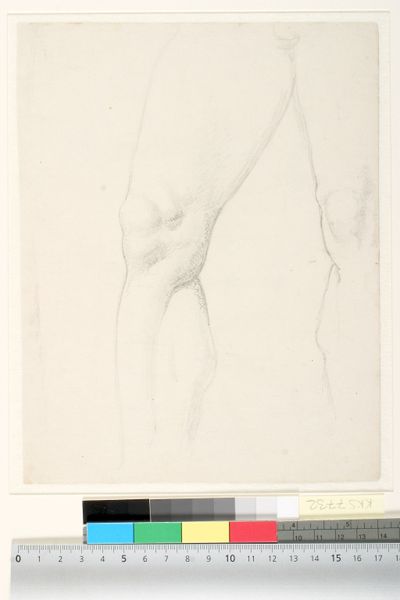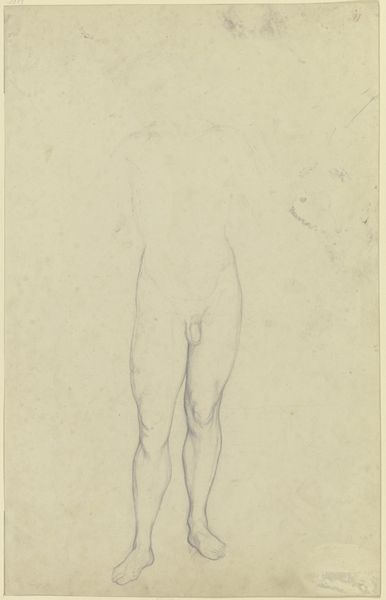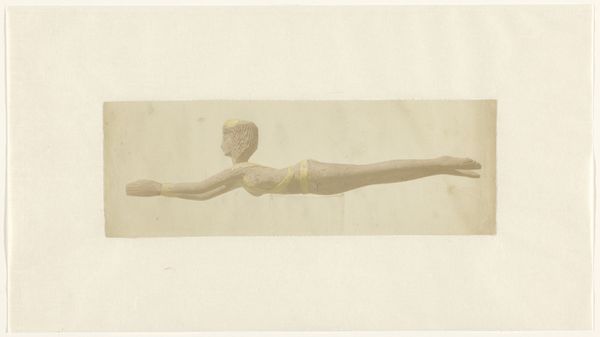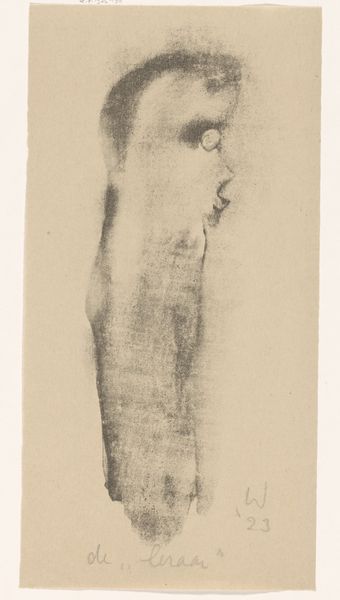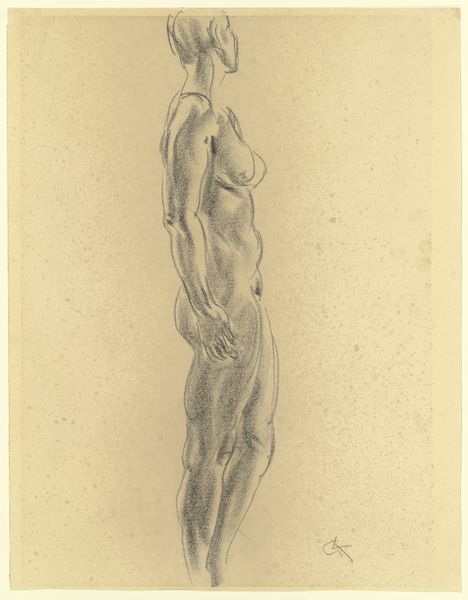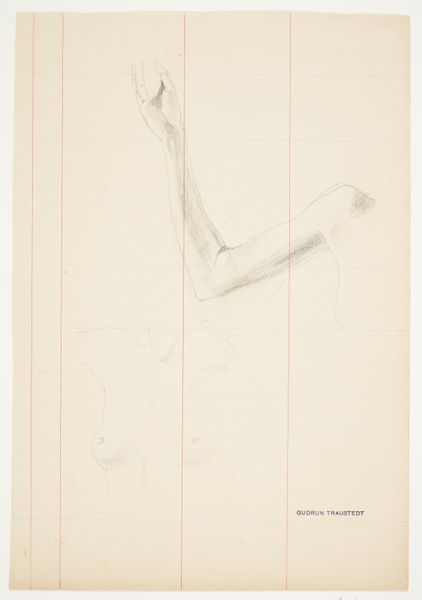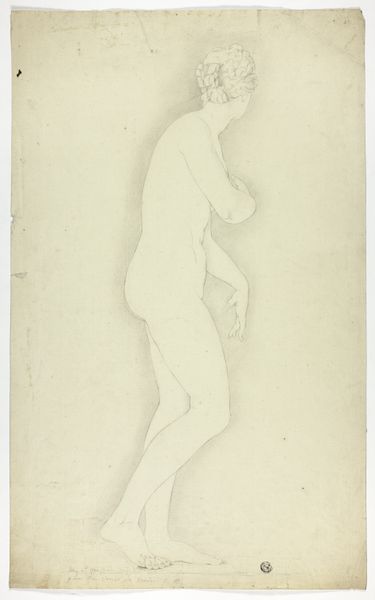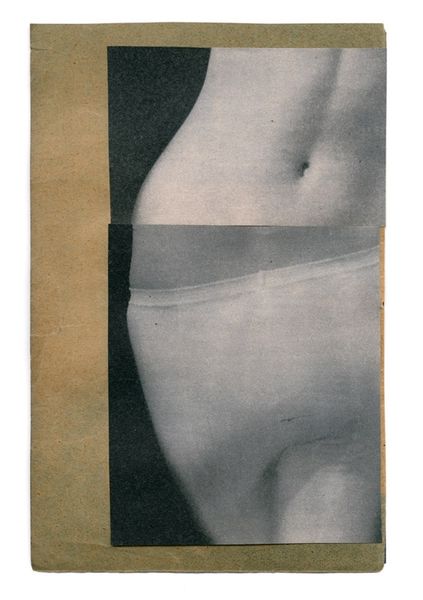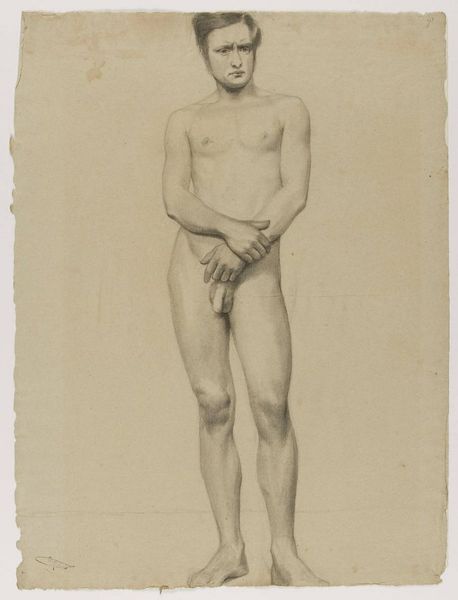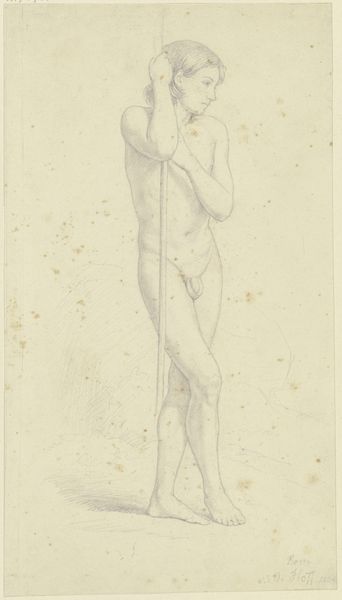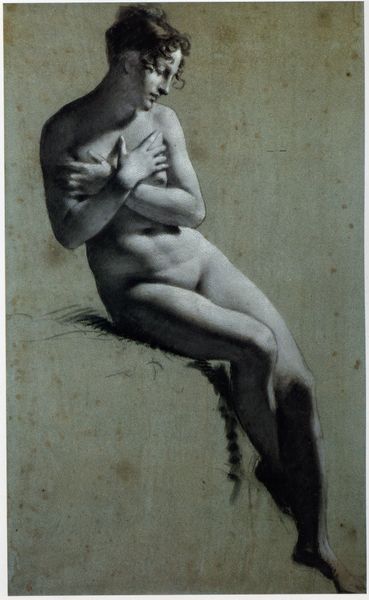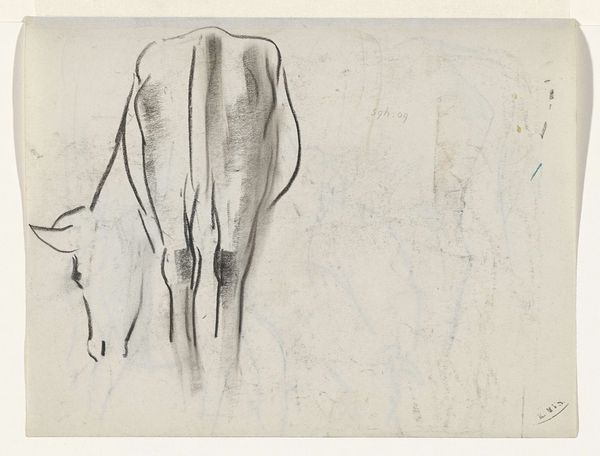
drawing, print, paper, pencil, chalk, charcoal
#
portrait
#
drawing
# print
#
classical-realism
#
charcoal drawing
#
paper
#
pencil
#
chalk
#
charcoal
#
academic-art
#
charcoal
#
nude
Dimensions: 538 × 370 mm
Copyright: Public Domain
Editor: This is "Legs after Antique Statue of Standing Figure" by John Downman, created in 1775, using charcoal, chalk, and pencil on paper. The starkness of the medium on the aged paper evokes a sense of both precision and fragility. What stands out to you? Curator: It is fascinating how Downman isolates these lower limbs, compelling us to contemplate the classical form through pure line and tonal variation. Note how the artist’s engagement with line and shading defines the musculature, particularly around the knees and calves, giving a sense of volume without relying on strong contrast. Do you perceive the use of varying pressure in the application of the charcoal? Editor: Yes, I see that lighter strokes create a sense of depth. How does Downman's technique contribute to the work's overall meaning? Curator: The restricted palette and focus on form place emphasis squarely on the anatomy itself. The work transcends mere representation; it is an exploration of idealised beauty through the lens of classical sculpture, reduced to its most fundamental aesthetic elements. The drawing becomes an exercise in pure form, a study of the relationship between light, shadow, and the human body. The absence of background further underscores this. What do you make of the paper itself as part of the piece? Editor: I hadn’t considered the paper! Now I notice the stains and tears. I guess the material’s aging enhances the artwork's connection to history. Curator: Precisely. The imperfect paper supports the work, further connecting the study to time while also focusing on line and tone. The effect is almost haunting in its simplicity, prompting questions about the nature of classical ideals and the passage of time. It underscores the fundamental role of drawing in artistic training during the late 18th century. Editor: This was an interesting deep dive into lines and materials. Now I realize it's not just an old drawing; it’s a whole visual statement.
Comments
No comments
Be the first to comment and join the conversation on the ultimate creative platform.

